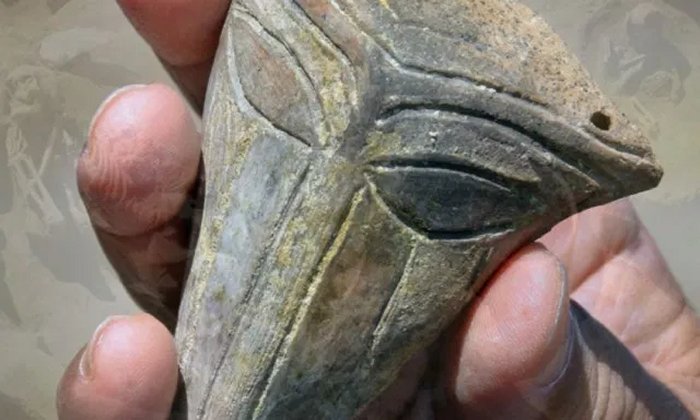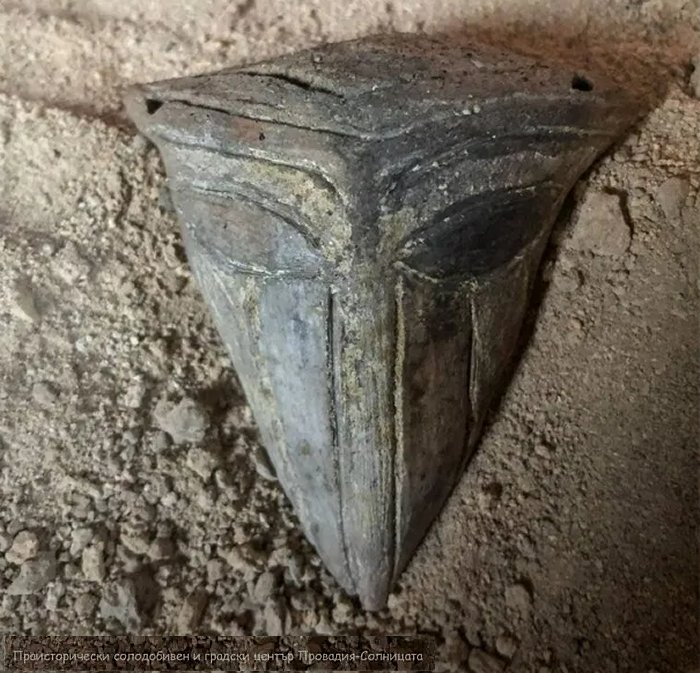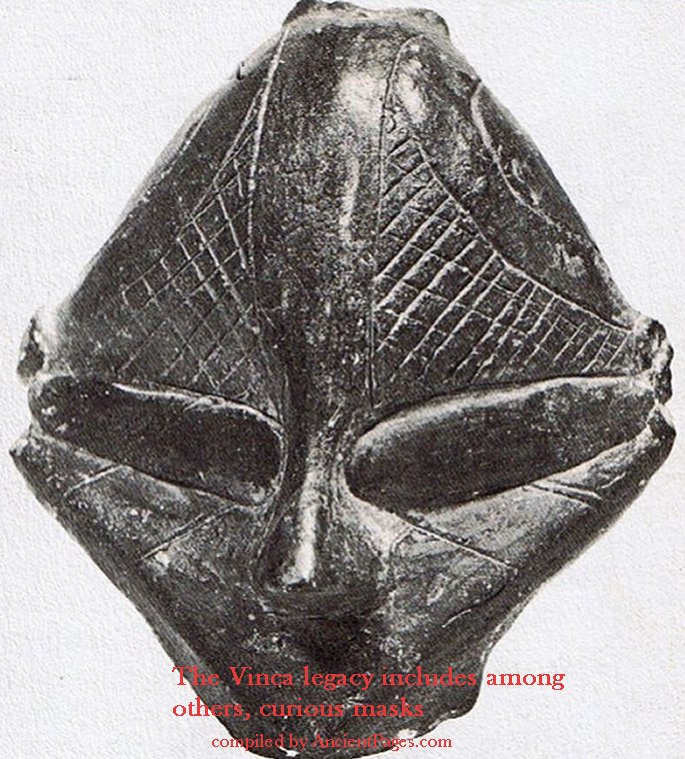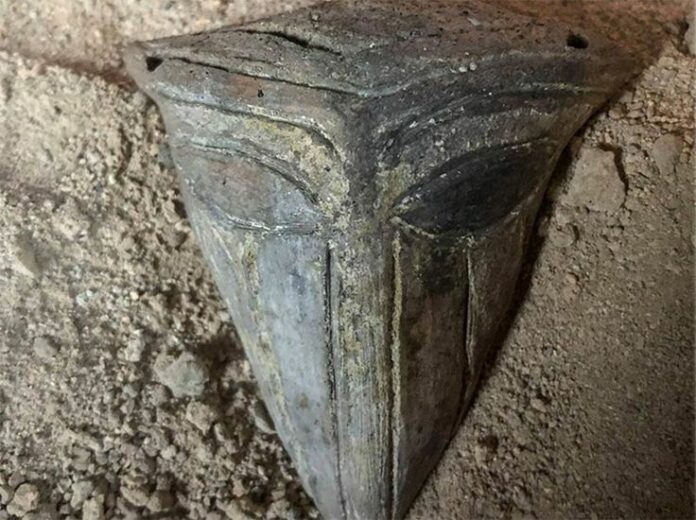A fascinating discovery has emerged from the depths of an ancient settlement in Northeast Bulgaria. A peculiar prehistoric mask, lacking a mouth but featuring both human and animal characteristics, has been unearthed at the Provadiya – Solnitsata (“The Salt Pit”) Settlement Mound. This enigmatic artifact, dating back 6,000 years to the Late Chalcolithic period, offers a glimpse into the mysteries of one of Europe’s earliest urban centers.
A Hidden Treasure Unveiled

Discovered in 2014, the mask initially appeared as a mere relic from the past. The Provadiya – Solnitsata site, known as Europe’s oldest town, has long been a treasure trove of historical artifacts. The latest excavation revealed this peculiar clay mask, distinguished by its lack of a mouth and triangular shape. The mask’s front features a human-like face, with stylized elements that hint at both animal and human traits.
The mask’s design includes short protuberances at the top, possibly representing stylized ears. These “ears” have small holes, suggesting the mask may have been worn or hung as a pendant. The facial features of the mask—shaped eyebrows, a stylized nose, and elliptical eyes—reveal a craftsmanship that was both detailed and symbolic.
A Glimpse Into Ancient Symbolism

Dr. Vasil Nikolov, an expert in prehistoric artifacts, noted the mask’s symbolic significance. “The emphasis on the eyes—particularly their shape and size—conveys a deeper meaning than the absence of a mouth,” Nikolov explained. The mask’s design, including the polished vertical bands beneath the eyes, suggests it was not merely a decorative item but a status symbol imbued with power and wisdom.
The mask bears resemblance to another prehistoric figurine found near Kapitan Andreevo, Southeast Bulgaria, which also features triangular facial traits. Such similarities highlight the widespread nature of these symbolic artifacts across the region.
The Salt Pit Settlement: A Hub of Ancient Civilization

The Provadiya – Solnitsata site, dating back to around 5,000 BC, was a thriving hub of salt production, an essential commodity for ancient trade. The site’s significance is further emphasized by its impressive architectural achievements, including Europe’s first fortress walls built some 6,700 years ago. These thick, stone walls were constructed to protect the settlement’s valuable salt resources.
The ancient inhabitants of Solnitsata utilized a vast cone-shaped rock salt deposit, located about 13 meters underground. This early salt production not only boosted local trade but also influenced the economic and social dynamics of the settlement. Salt was likely used as a form of currency before the advent of gold.
Conclusion
The 6,000-year-old mouthless mask from the Provadiya – Solnitsata settlement offers a profound insight into the symbolic and cultural practices of an early European civilization. While its precise use remains unknown, its intricate design and the context of its discovery highlight the complexity of ancient societies in Bulgaria. For those intrigued by the mysteries of ancient Europe, the Provadiya – Solnitsata settlement stands as a testament to the ingenuity and artistry of its early inhabitants, shedding light on a civilization that paved the way for future advancements in human history.
